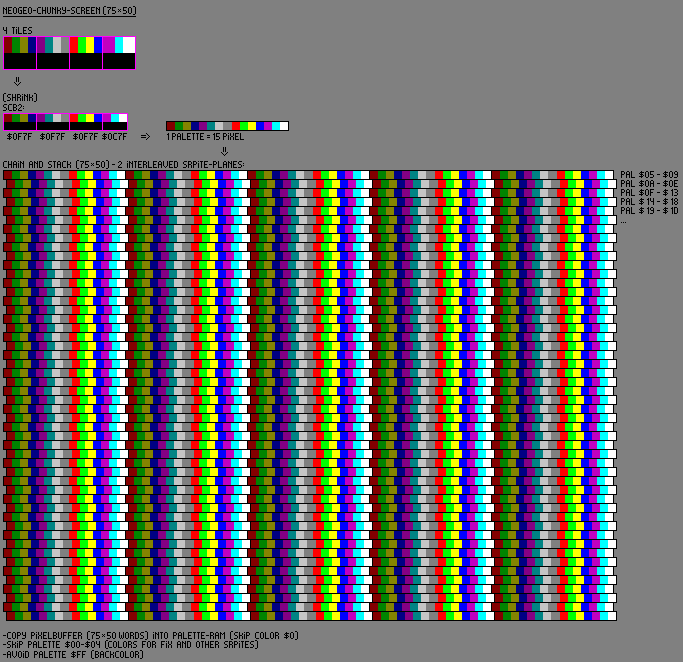it's quiet simple - abuse the palette-ram with some special sprites!

some ideas for use this in a game:
- raycasting (wolf3d, doom...)
- mode7 (snes) racing game like mariokart or f-zero
- semi 3d tunnel-shooter like stardust
- simple voxel-engine (go to '1:00')

Examples - precompiled (check mame/roms/puzzledp), needs mame & vasmm68k
there are to examples:
- simple (like the image above)
- advanced, different mappings (used in 'DIFF')
'DIFF' uses the advanced one but copy is done in VBLANK-routine with some doublebuffering.
Youtube
pro:
- very flexible (75x50, 60x60, 90x42...)
- mix different pixelsizes (3, 3, 3, 4...) to stetch
con:
- only 30fps (some tearing) -> write only to palette-ram during VBLANK, only ~130 palettes can by copied without random pixels on screen (snow) - frame #1 => copy upper screen half, frame #2 => copy lower screen half
- need 40 sprites (75x50)
- need a lot of palette-ram

 - thanks a lot for sharing the details and code.
- thanks a lot for sharing the details and code.




 This should give nice smooth concentric circles for some contrasts and help investigating the pixel modes regarding their effect on the perceived resolution.
This should give nice smooth concentric circles for some contrasts and help investigating the pixel modes regarding their effect on the perceived resolution.